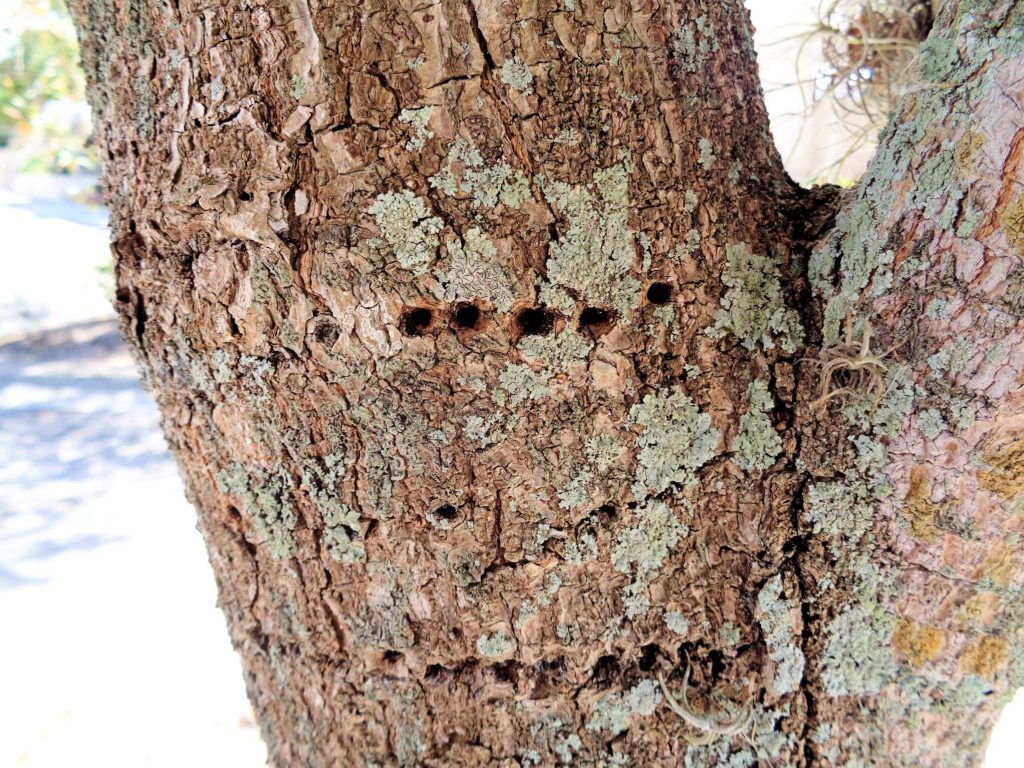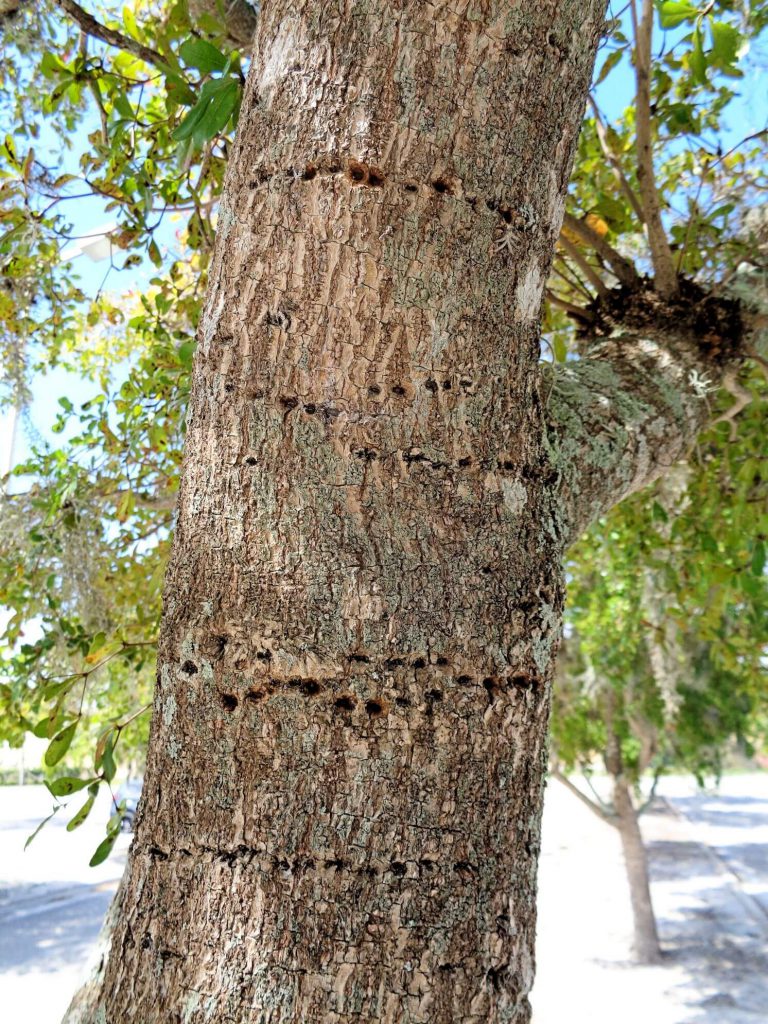By Ralph E. Mitchell
 The title of this article needs a great deal of explaining! First, I am talking about the black olive tree, Bucida buceras, (not a true olive) a common, well-liked shade tree in our area. Secondly, why would a black olive tree end up with holes in it? Is it a caterpillar of some type? Are the Sri Lanka weevils to blame? No, it is the legendary yellow-bellied sapsucker!
The title of this article needs a great deal of explaining! First, I am talking about the black olive tree, Bucida buceras, (not a true olive) a common, well-liked shade tree in our area. Secondly, why would a black olive tree end up with holes in it? Is it a caterpillar of some type? Are the Sri Lanka weevils to blame? No, it is the legendary yellow-bellied sapsucker!
Many people have black olive trees in their landscape, especially the cultivar, ‘Shady Lady’. A beautiful, evergreen shade tree with horizontal branches, the black olive is a generally easy-to-care-for tree with only a few minor pest issues. Occasionally it can be attacked by small caterpillars which make a mess of the leaves. The good news is that the tree grows its leaves back in short order. Black olives may also grow odd horn-like galls caused by the feeding of a tiny mite. Nothing really stunning or catastrophic happens to the black olive.
They say that optics are everything these days, and the yellow-bellied sapsucker makes what appears to be a great deal of visible damage to black olives – crooked rings of side-by-side small holes up and down the trunk and branches. On the contrary, the damage caused by the said sapsucker on black olives, and other trees, is for the most part merely cosmetic and has no long-lasting consequences. But why does this bird cause such damage in the first place?
 The yellow-bellied sapsucker is a small migratory woodpecker that graces our area during winter months. This bird pecks holes into trunks leaving very noticeable side-by-side punctures in telltale rings. These punctures allow sap to flow which is consumed by the sapsucker. The sap also attracts thirsty insects which are also eaten by these birds. While black olives are favored by yellow-bellied sapsuckers in our area, they may also get on other large woody plants such as red maple, sycamore, and live oak. A couple of things to keep in mind. First, the yellow-bellied sapsucker is protected by law, so cause no harm to this bird. Secondly, the damage is easily remedied by the tree itself. The holes are eventually “sealed“ by the tree and are generally not a problem. If the damage was beyond what you could bear esthetically, temporarily wrapping the tree with burlap, felt or even hardware cloth would provide a mechanical barrier to keep out future birds and their holes.
The yellow-bellied sapsucker is a small migratory woodpecker that graces our area during winter months. This bird pecks holes into trunks leaving very noticeable side-by-side punctures in telltale rings. These punctures allow sap to flow which is consumed by the sapsucker. The sap also attracts thirsty insects which are also eaten by these birds. While black olives are favored by yellow-bellied sapsuckers in our area, they may also get on other large woody plants such as red maple, sycamore, and live oak. A couple of things to keep in mind. First, the yellow-bellied sapsucker is protected by law, so cause no harm to this bird. Secondly, the damage is easily remedied by the tree itself. The holes are eventually “sealed“ by the tree and are generally not a problem. If the damage was beyond what you could bear esthetically, temporarily wrapping the tree with burlap, felt or even hardware cloth would provide a mechanical barrier to keep out future birds and their holes.
So, while you may find your black olives looking a bit pockmarked, just remember it is just something not to worry about! For more information on perceived landscape problems that actually require no action, please call our Master Gardener volunteers on the Plant Lifeline on Mondays, Wednesdays and Fridays from 1 to 4 pm at 764-4340 for gardening help and insight into their role as an Extension volunteer. Just as a reminder, our new office is located at the North Charlotte Regional Park at 1120 O’Donnell Blvd, Port Charlotte FL 33953. The Plant Lifeline is also now open at our new site! Our phone numbers and email addresses continue to remain the same. Don’t forget to visit our other County Plant Clinics in the area. Our Eastport Environmental Demonstration Garden is always open to the public outside the gate at 25550 Harbor View Road and will continue to be in operation and open to the public. Master Gardener volunteers tend this garden on Tuesday mornings from 8 to 10 am and are available for questions. Ralph E. Mitchell is the Director/Horticulture Agent for the UF/IFAS Charlotte County Extension Service. He can be reached at 941-764-4344 or ralph.mitchell@charlottecountyfl.gov.
Resources:
Leonard, D. J. (2017) Why Are There Holes in My Tree? The University of Florida Extension Service, IFAS – Calhoun County.
Robbins, J. A. (2020) Sapsucker Damage on Woody Plants. The University of Arkansas Extension Service.
Boas, S. (2010) A Sapsucker Finds a Sycamore Tree to Call Her Own. Orlando Sentinel
Caldwell, D. (2018) Do You Have Rusty Staining Under the Old Bucida (Black Olive) Tree? It’s the caterpillars or galls. The University of Florida Extension Service, IFAS – Collier County.
 1
1

Comments are closed.